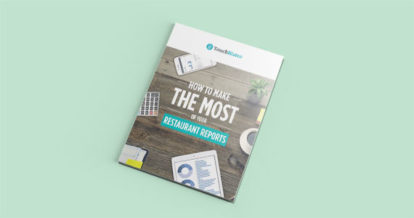Reach the right business decisions faster with restaurant reporting from your POS.
In order to truly understand your business, you need to be on top of your restaurant reporting. Fortunately, your point of sale (POS) system produces cloud reports featuring a treasure trove of data about food costs, labor, staff performance, customer satisfaction, and much more. All of this data can be used to help you track your business’ performance and make revenue-driven decisions.
However, with so much information at your fingertips, figuring out what to do with this data can sometimes feel overwhelming. If you don’t know where to start when you look at your restaurant reporting, this guide is for you. Fill out the form above and download our free How to Make the Most of Your Restaurant Reports guide to start learning the in’s and out’s of essential restaurant reports.
Need more context before you click “submit?” Keep reading to learn all about restaurant reporting and to get a preview of our guide.
What Is Restaurant Reporting?
Restaurant reporting refers to raw data about your restaurant, such as inventory prices and sales figures, that is presented in easy-to-understand formats, such as charts, graphs, or searchable tables.
For instance, examples of cloud restaurant reports included with TouchBistro are:
- Labor Cost Analysis Report
- Staff Performance Restaurant Report
- Sales by Order Type Report
- Tips By Payment Method Restaurant Report
Where Can You Find Reports for Restaurants?
Your POS system is home to the most valuable restaurant reports about your business and this information is used to generate valuable cloud reports. Many POS systems come with out-of-the-box reports, such as “Sales by Menu Item” or “Hourly Labor Cost,” and also give you the ability to create custom reports. If you don’t know how to access your POS system’s cloud reporting functionality, contact your account manager.
Any other software you use at your restaurant, whether standalone or integrated with your POS, will also give you access to relevant reports. For example, your reservation platform can generate reports that show your most coveted reservation times and how many bookings you can expect on a typical night. You can then use this information to schedule the appropriate number of staff and avoid over- or under-scheduling.
Why Is Restaurant Reporting Important?
Restaurant reporting is important because it gives you data you can use to inform business decisions. When you base decisions on data, rather than on a hunch, you’ll be more likely to reach an outcome that will affect your business positively.
For example, let’s say you notice your restaurant profit margins are shrinking. Without reporting, you would have to play the long and costly game of guessing the root of the problem blindly. With access to restaurant reporting, however, you might discover that your margins are shrinking because inventory costs for key entree ingredients, like proteins, have increased. You could then take action, such as reducing portion sizes or increasing menu prices, to increase your margins.
In other words, restaurant reporting can help you make more money, while also saving you time and money.
Restaurant Reporting Guide Preview
When you download this free guide to restaurant reporting, you’ll learn how to make the most of this valuable data about your business. Here’s a preview of what you’ll find in this guide.
Impact Your Bottom Line
Learn how to make the most of food cost and labor reports to make more informed staffing decisions and manage inventory costs and menu prices.
Refine Your Menu
Understand which restaurant report to review to decide which items should stay on your menu, and which ones need to go.
Evaluate and Monitor Your Staff
Learn which reports for restaurants you should keep an eye on to find out which employees deserve promotions.
Enhance the Customer Experience
We’re pointing you towards the restaurant reports that will help you keep customers coming back for more.
Download our free guide to start making the most of restaurant reporting today to take advantage of your business data.




